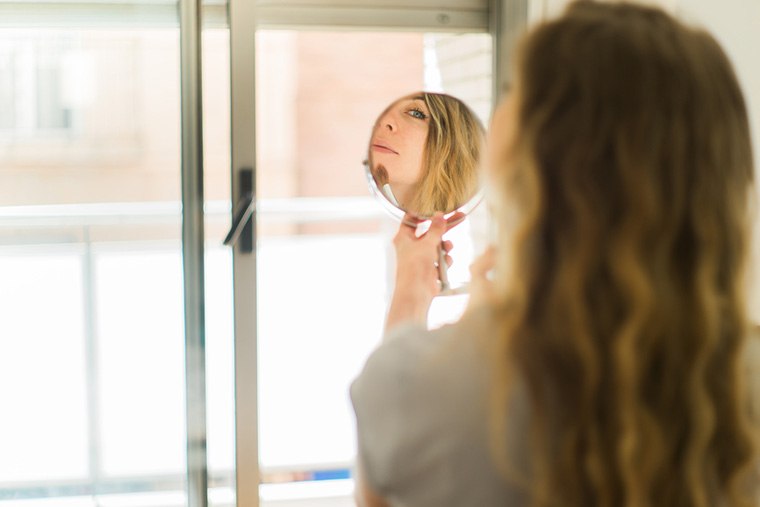This Is How You Should Actually Spot Treat Breakouts, According to Pros
Pimples have the weird tendency to hang out in the same places over and over again. Case in point? My chin. Somehow, beginning in my mid-to-late twenties, it became an acne factory, while the rest of my face stayed clear.
To deal, I've applied a never-ending slew of products—filled with all sorts of skin-boosting nutrients—to no avail. It's basically like a boomerang: Just when I think the acne is gone, it comes back with a vengeance—in the same exact place.
It wasn't until I received a (dreamy) facial treatment from celebrity aesthetician Angelina Umansky of Spa Radiance in a suite at New York's Plaza Athenee Spa that I learned something life-changing: You should treat your problem areas differently than the skin on the rest of your face.
So, according to Umansky, my chin is a whole other frontier from the rest of my complexion.
Keep reading to learn more about dealing with two different skin types.

Dealing with specific concerns
Spot treating isn't exactly a new idea. People have been putting muds on pimples for years now, but by treating entire quadrants of your face differently, Umansky suggests that you might be able to better deal with your complexion as a whole.
Imagine this scenario: Your chin is inflamed, so you apply a benzoyl peroxide or salicylic acid-rich treatment all over your face and hope for the best (sound familiar?). It might help you in a specific area with inflammation, but the rest of your face could feel dry and out-of-whack—which is exactly what Umansky's talking about.

{{post.sponsorText}}
"A lot of times people strip their skin and cause more breakouts, and it has nothing to do with their skin—it's how they treat it," she tells me. "If around 10 percent of your face is problematic and the rest is fine, you have two different skin types."
"The magic is in the routine, not in the product."
In my case—as is the same with many others afflicted with hormonal acne—my chin creates more oil than the rest of my face, which is normal.
"The skin on your T-zone, including your forehead, nose, and chin, contains the highest concentration of oil glands on the body," notes Joshua Zeichner, M.D., a New York-based dermatologist. "Because of this, they're particularly susceptible to breakouts, clogged pores, and an oily appearance." What's more, he agrees that since these areas are high in sebaceous activity, you should be treating them differently than the rest of your face.
So he and Umansky are unanimous that I should apply more oil-zapping, acne-clearing products to my chin. "If you start using salicylic acid because you want to treat breakouts on your chin all over your face, you could be disturbing the natural balance of the rest of your face," says Umansky. "You don't want to do that. Sometimes some areas are just a little off, so you should treat them for inflammation, while the rest of your face might need a lot of hydration."
Ever since I received this tip, I've been using a salicylic acid-based cleanser as a second cleanse solely on my chin area, a blemish-targeted moisturizer, and my oils only on the rest of my face. After about a week on the regimen, I'm already seeing my chin clear up.
"The magic is in the routine, not in the product," she explains. So the key is to divide and conquer acne once and for all.
This is your ultimate guide to the different pimple types—and how to treat them. You could also sip on these 9 smoothies for healthy, glowing skin.
Loading More Posts...